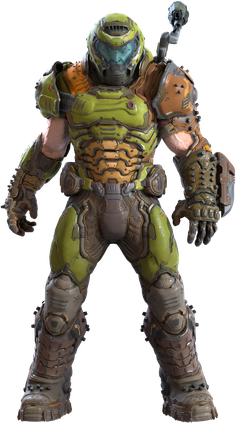Related Research Articles

Hexen II is a dark fantasy first-person shooter (FPS) video game developed by Raven Software and published by id Software in 1997. It is the third game in the Hexen/Heretic series, and the last in the Serpent Riders trilogy. Using a modified Quake engine, it features single-player and multiplayer game modes, as well as four character classes to choose from, each with different abilities. These include the "offensive" Paladin, the "defensive" Crusader, the spell-casting Necromancer, and the stealthy Assassin.

Machinima, originally machinema, is the use of real-time computer graphics engines to create a cinematic production. The word "machinima" is a portmanteau of the words machine and cinema. According to Guinness World Records, machinima is the art of making animated narrative films from computer graphics, most commonly using the engines found in video games.

Quake III Arena is a 1999 multiplayer-focused first-person shooter developed by id Software. The third installment of the Quake series, Arena differs from previous games by excluding a story-based single-player mode and focusing primarily on multiplayer gameplay. The single-player mode is played against computer-controlled bots. It features music composed by Sonic Mayhem and Front Line Assembly founder Bill Leeb.

Quake II is a 1997 first-person shooter video game developed by id Software and published by Activision. It is the second installment of the Quake series, following Quake. The game's storyline is continued in its expansions, including one tying in Quake II and the first game, and Quake 4.

Quake is a first-person shooter game developed by id Software and published by GT Interactive. The first game in the Quake series, it was originally released for MS-DOS, Microsoft Windows and Linux in 1996, followed by Mac OS and Sega Saturn in 1997 and Nintendo 64 in 1998. In the game, players must find their way through various maze-like, medieval environments while battling monsters using an array of weaponry. Quake takes inspiration from gothic fiction and the works of H. P. Lovecraft.

The NES Zapper, also known as the Video Shooting Series light gun in Japan, is an electronic light gun accessory for the Nintendo Entertainment System (NES) and the Japanese Famicom. It was released in Japan for the Famicom on February 18, 1984, and launched alongside the NES in North America in October 1985.

Doom 3 is a 2004 survival horror first-person shooter video game developed by id Software and published by Activision. Doom 3 was originally released for Microsoft Windows on August 3, 2004, adapted for Linux later that year, and ported by Aspyr Media for Mac OS X in 2005. Developer Vicarious Visions ported the game to the Xbox, releasing it worldwide on April 4, 2005.
Shooter video games or shooters are a subgenre of action video games where the focus is almost entirely on the defeat of the character's enemies using the weapons given to the player. Usually these weapons are firearms or some other long-range weapons, and can be used in combination with other tools such as grenades for indirect offense, armor for additional defense, or accessories such as telescopic sights to modify the behavior of the weapons. A common resource found in many shooter games is ammunition, armor or health, or upgrades which augment the player character's weapons.
QuakeCon is a yearly convention held by ZeniMax Media to celebrate and promote the major franchises of id Software and other studios owned by ZeniMax. It includes a large, paid, bring-your-own-computer (BYOC) LAN party event with a competitive tournament held every year in Dallas, Texas, USA. The event, which is named after id Software's game Quake, sees thousands of gamers from all over the world attend every year to celebrate the company's gaming dynasty.

id Tech 3, popularly known as the Quake III Arena engine, is a game engine developed by id Software for their video game Quake III Arena. It has been adopted by numerous games. During its time, it competed with the Unreal Engine; both engines were widely licensed.

SK Gaming is a professional esports organization based in Germany that has teams across the world competing in different titles. SK is particularly known for their success in Counter-Strike (CS) tournaments. SK's Brazilian CS team won the ESL One Cologne 2016 Major. SK currently has players and teams competing in League of Legends and Hearthstone. SK Gaming was founded in 1997 by a small group of Quake players in Oberhausen.

id Tech 4, popularly known as the Doom 3 engine, is a game engine developed by id Software and first used in the video game Doom 3. The engine was designed by John Carmack, who also created previous game engines, such as those for Doom and Quake, which are widely recognized as significant advances in the field. This OpenGL-based game engine has also been used in Quake 4, Prey, Enemy Territory: Quake Wars, Wolfenstein, and Brink. id Tech 4 is licensed under the terms of the GNU General Public License v3.0 or later.

Black Widow Games was a video game developer specializing in promotional mods for Quake and Half-Life 3D engines. They are best known for their They Hunger series. Prominent members included Neil Manke, Einar Saukas, and Magnus Jansén. The company business model is based on developing contract-work mods for the marketing campaigns of customer companies and products, freely distributed for promotion.

Doomguy is a fictional character and the protagonist of the Doom video game franchise of first-person shooters created by id Software. He was created by American video game designer John Romero. He was introduced as the player character in the original 1993 video game Doom. Within the Doom series, Doomguy is a demon hunter space marine dressed in green combat armor who rarely speaks onscreen, and his personality and backstory were intentionally vague to reinforce his role as a player avatar. In Doom Eternal, he is voiced by American voice actor Matthew Waterson, while Jason Kelley voices the character in that game's downloadable content The Ancient Gods: Part Two. He has appeared in several other games developed by id Software, including Quake Champions and Quake III Arena.
Virtual goods are non-physical objects and money purchased for use in online communities or online games. Digital goods, on the other hand, may be a broader category including digital books, music, and movies. Virtual goods are intangible by definition.
Mass Effect is a military science fiction media franchise created by Casey Hudson. The franchise depicts a distant future where humanity and several alien civilizations have colonized the galaxy using technology left behind by advanced precursor civilizations.

A first-person shooter (FPS) is a video game centered on gun fighting and other weapon-based combat seen from a first-person perspective, with the player experiencing the action directly through the eyes of the main character. This genre shares multiple common traits with other shooter games, and in turn falls under the action games category. Since the genre's inception, advanced 3D and pseudo-3D graphics have proven fundamental to allow a reasonable level of immersion in the game world, and this type of game helped pushing technology progressively further, challenging hardware developers worldwide to introduce numerous innovations in the field of graphics processing units. Multiplayer gaming has been an integral part of the experience, and became even more prominent with the diffusion of internet connectivity in recent years.
A cover system is a video game gameplay mechanic that allows a virtual avatar to hide from and avoid dangers, usually in a three-dimensional world. This method is a digital adaptation of the real-life military tactic of taking cover behind obstacles, for purposes of attaining protection from enemy ranged or area effect attacks, such as gunfire or explosions.

A number of models of Sony's PlayStation (PS) video game console were produced from 1994 to 2006. Most revisions of the PlayStation were made to fix known hardware issues or lower production costs and time, while others featured substantial external changes.
References
- ↑ Case, Loyd (Mar 12, 2007). "Gaming Is Everywhere: GDC 2007". ExtremeTech . Archived from the original on 2013-12-14. Retrieved Dec 21, 2012.
- 1 2 Mallory, Jordan. "The Future of Gaming Technology". Gamedaily.com. Retrieved 2012-07-16.
- ↑ "Get Pounded by TN Games' ForceWear(TM) Vest - Forbes.com". Forbes . Archived from the original on 2007-03-23. Retrieved 2007-03-23.
- ↑ "PSU interview with CEO of TN Games". PSU.com. Feb 24, 2007. Archived from the original on February 27, 2007. Retrieved Dec 21, 2012.
- ↑ "Forcewear gaming vest, er, worn". The Inquirer. Archived from the original on June 11, 2011. Retrieved 2012-07-16.
{{cite web}}: CS1 maint: unfit URL (link)